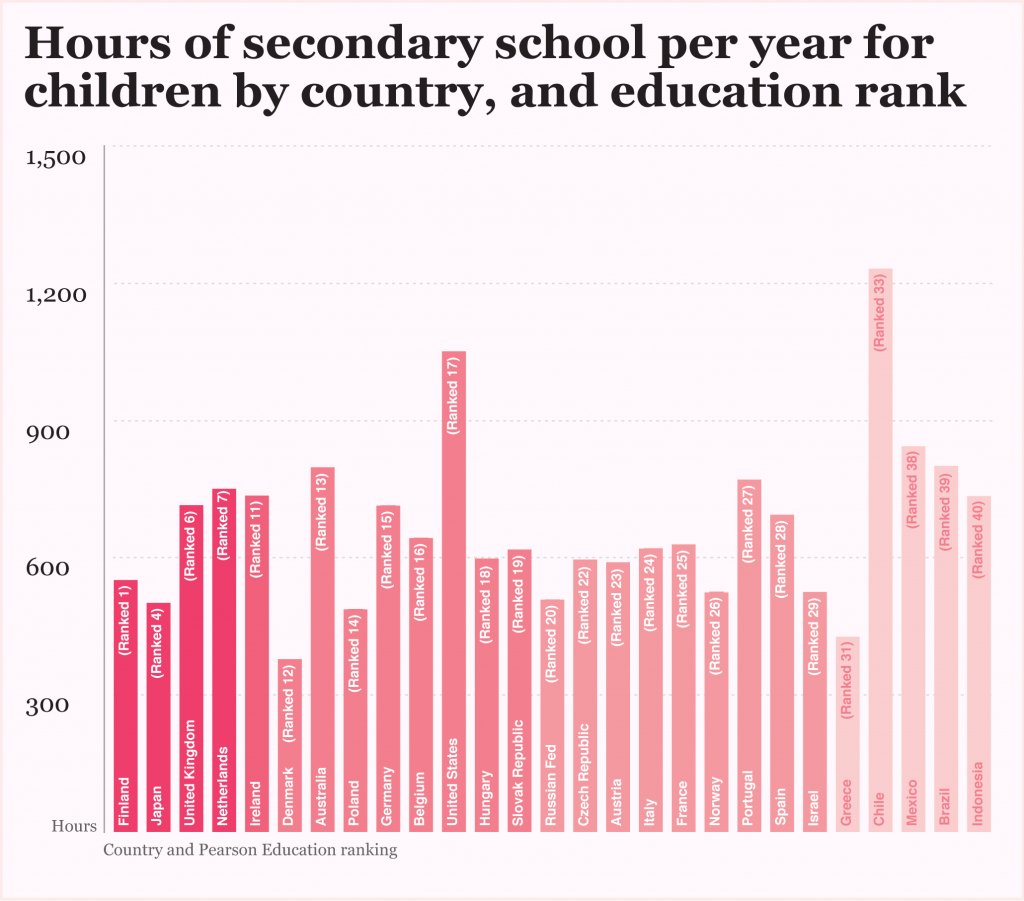TweetEducation secretary Michael Gove has called for longer school days and shorter school holidays to improve pupil performance and make life easier for working parents – but does the evidence support him? Matt Burgess and Emma Greatorex investigate.
The changes would mean longer working hours for teachers and less time off. This has already been criticised by the National Union of Teachers who said: “Michael Gove’s support for an extended school day and shorter school summer holidays does not stand up to scrutiny.
“Countries, which the Education Secretary often holds up as examples of excellence such as Finland, have similar amounts of hours in the classroom as the UK and longer summer holidays.”
Indeed, Gove’s claims may be based on very selective data.
Figures from the Organisation for Economic Co-operation and Development (OECD) show a mixed picture when it comes to the amount of hours pupils around the world spend in classrooms.
We’ve used the latest data from the OECD, 2009, and combined it with Pearson’s education rankings for the top countries in the world to see how they compare.
The figures are broken into:
- primary level (the first six years of schooling)
- lower secondary (three years)
- and upper secondary (once pupils have completed 9 years of education).
In England children spend 635 hours per year in primary education, and 714 hours per year in lower and upper secondary education.
The UK is ranked sixth in Pearson’s rankings.
The time children in England spend in the classroom each year is broken down like this:
Pupils in Finland, which is ranked first in the world for education, have more hours when they are younger and fewer as they progress through their country’s education system. Primary children have 677 hours per year, those at lower secondary have 592 and upper secondary 550 each year.
In upper secondary this is 164 hours a year less than UK children.
Unfortunately, the OECD do not provide figures for South Korea, Hong Kong and Singapore who are all above the United Kingdom/England in the rankings.
However, Japanese pupils (ranked fourth) have 72 hours a year more at primary level than their counterparts in the UK, but have 214 fewer hours a year at upper secondary level.
The two countries, both ranked above Gove’s, ensure younger children are given more education than those further through the school system.
As the graph below shows, ordering countries by their world ranking there is no discernible pattern relating to length of time spent in the classroom (shown by the size of the bars).
Broadly the data shows that countries with a high amount of hours at upper secondary level – such as the United States and Chile – do not necessarily have an improved overall performance.
Suggestions that school days are lengthened are not supported by parents, either: two thirds of adults with children in their household, answering a YouGov survey, said that UK school days were the right length.
Performance of children at schools will ultimately not just depend on the overall amount of time they spend in the building it is also dependent on the resources, quality of teaching, quality of materials available and a host of other factors.
Here’s the overall data of how many hours children spend at school. You can switch between primary, lower secondary and upper secondary figures using the drop down menu.

Pingback: MAPPED: How many hours do children spend at school around the world? | Help Me Investigate… Education
Pingback: Help Me Investigate in 2013 – and 2014 | The Help Me Investigate Blog